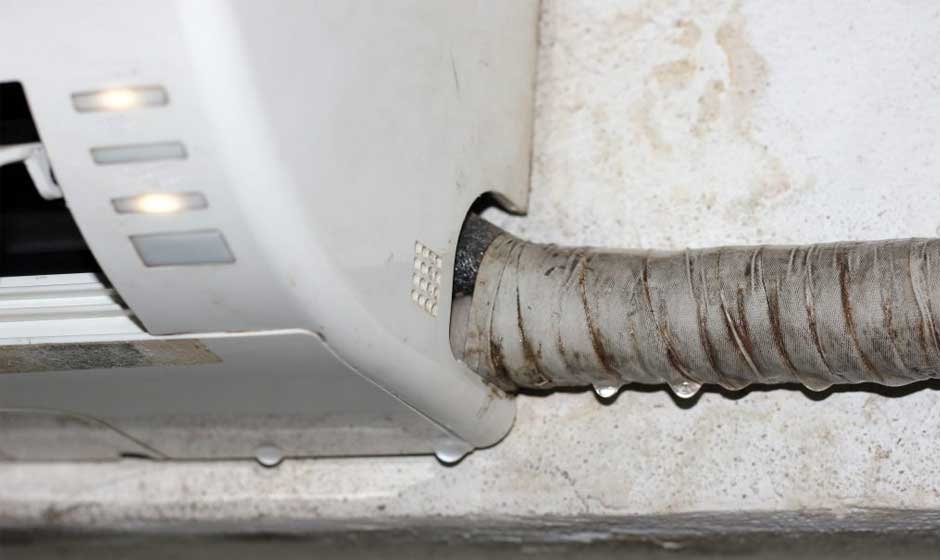An air conditioning unit is designed to cool a home efficiently, but when water begins leaking from the system, it can signal an underlying problem. While some condensation is normal during operation, excessive water buildup or visible leaks indicate an issue that needs attention. If left unaddressed, a leaking AC unit can lead to water damage, mold growth, and reduced cooling efficiency. Several factors, such as clogged drain lines, frozen coils, or improper installation, can contribute to this problem. We will explore the common reasons an AC unit may leak water and the steps needed to fix it. Understanding these issues helps homeowners prevent further damage, keep their systems functioning correctly, and avoid costly AC repairs in Flower Mound in the future.
Reasons an AC unit may leak water
-
Clogged Condensate Drain Line and How to Clear It
A clogged condensate drain line is one of the most frequent causes of AC water leaks. When an air conditioner operates, it removes moisture from the air, which condenses into water and is directed through a drain line. Over time, dirt, dust, and algae can build up inside the drain pipe, creating a blockage that prevents water from flowing correctly. When this happens, the water has nowhere to go and begins to back up, eventually leaking from the unit.
Clearing a clogged drain line is a straightforward solution. First, turning off the AC unit prevents further water buildup. The drain line can then be accessed, usually near the indoor unit, and inspected for obstructions. Using a wet/dry vacuum to suction out debris or flushing the line with water and vinegar can help clear the blockage. Regular maintenance, such as pouring a cleaning solution down the drain every few months, prevents algae and debris buildup, keeping the line free of clogs. Addressing this issue early ensures proper drainage and prevents water leaks from becoming a recurring problem.
-
Frozen Evaporator Coil and Preventing Ice Buildup
Another common cause of water leakage is a frozen evaporator coil. The evaporator coil is responsible for absorbing heat and cooling the air, but if the airflow is restricted, the coil can become too cold and freeze. Once the ice melts, excess water may overwhelm the drain pan and start leaking onto the floor. Low refrigerant levels, dirty air filters, or blocked vents can all contribute to coil freezing.
Fixing this issue starts by turning off the AC unit and allowing the ice to melt completely. Checking and replacing a dirty air filter improves airflow and prevents future freezing. If low refrigerant is suspected, a professional inspection is needed to identify leaks and recharge the system. Ensuring all air vents are open and unobstructed also helps maintain proper airflow, reducing the risk of ice formation. Keeping the evaporator coil clean through regular maintenance prevents excessive moisture buildup and allows the AC unit to function efficiently.
-
Damaged or Rusted Drain Pan and How to Replace It
The drain pan collects condensation from the evaporator coil and directs it toward the drain line. Over time, the pan can develop cracks or rust, allowing water to escape instead of draining properly. A damaged drain pan is especially common in older AC units, where corrosion has weakened the material.
Replacing the drain pan is necessary to prevent further leaks. First, locating the pan beneath the evaporator coil and inspecting it for cracks or rust spots helps determine the severity of the damage. Temporary fixes, such as sealing minor cracks with waterproof sealant, may work in the short term, but replacing a severely damaged pan is the best long-term solution. Ensuring the new drain pan is fitted correctly and secured helps direct water away from the unit, reducing the risk of leaks. Regular inspections help catch early signs of wear, preventing water damage before it occurs.
-
Improper Installation and Adjusting the Unit’s Position
An improperly installed AC unit can also lead to water leaks. If the system is not level, condensation may not drain correctly and spill out instead of flowing through the drain line. Window units are particularly prone to this issue, as an incorrect tilt can cause water to accumulate inside rather than draining outside.
Adjusting the AC unit’s position can resolve this problem. Ensuring a central AC unit is installed on a level surface allows proper drainage. Window units should be tilted backward to direct water toward the exterior drain. Checking the installation manual for appropriate positioning guidelines helps prevent future leaks. If improper installation is suspected, having a professional inspect and adjust the unit can provide a long-term fix. Proper alignment prevents unnecessary water accumulation and helps maintain efficient system performance.
Water leakage from an AC unit is often a sign of an underlying issue that requires attention. Clogged drain lines, frozen evaporator coils, damaged drain pans, and improper installation are common reasons for leaks. Addressing these problems early prevents water damage, mold growth, and reduced cooling efficiency. Regular maintenance, such as cleaning the drain line, replacing air filters, and ensuring proper installation, helps prevent future leaks and keeps the system running efficiently. Identifying and resolving these issues as soon as they arise ensures a reliable and long-lasting air conditioning unit, providing consistent comfort without the risk of water damage.










